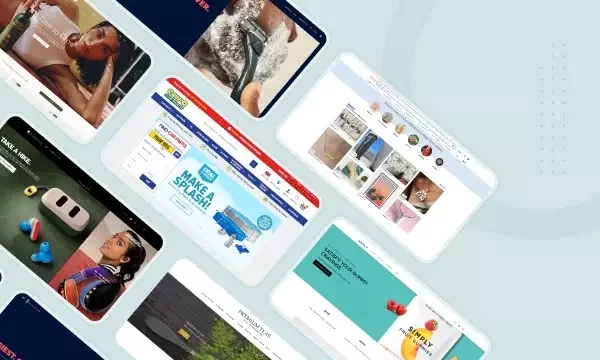In today’s fast-paced digital landscape, having a strong online presence is crucial for individuals and businesses alike. However, not everyone has the budget to invest in expensive website development. This is where the concept of “thirty dollar websites” comes into play. In this article, we’ll dive deep into the world of budget-friendly website solutions, exploring their benefits, potential drawbacks, and how they can be leveraged effectively.
Table of Contents
- Introduction
- What Are Thirty Dollar Websites?
- Pros of Opting for Budget Websites
- Affordability without Compromising Quality
- Quick Launch and Setup
- Ideal for Simple Online Presence
- Cons to Consider
- Limited Customization Options
- Potential for Similar-Looking Websites
- Scaling Limitations
- Making the Most Out of Thirty Dollar Websites
- Defining Your Website’s Purpose
- Choosing the Right Platform
- Selecting an Appropriate Template
- Customizing Within Constraints
- Tips for Effective Content Creation
- Crafting Engaging Headlines
- Optimizing Images and Media
- Prioritizing Clarity and Conciseness
- SEO Considerations
- Keyword Research on a Budget
- On-Page SEO Tactics
- Leveraging Social Media
- Ensuring User Experience
- Mobile-Friendly Design
- Intuitive Navigation
- Contact and Call-to-Action Elements
- Monitoring and Maintenance
- Regular Content Updates
- Checking for Broken Links
- Security Measures
- When to Consider Upgrading
- Conclusion
Introduction
In an age where a digital presence is essential, even those with limited resources can stake their claim on the internet. Thirty dollar websites, a budget-friendly alternative to costly web development, offer an accessible way to create an online identity. But are these low-cost solutions truly effective, and how can you make the most out of them? Let’s explore.
What Are Thirty Dollar Websites?
Thirty dollar websites, often referred to as budget or DIY websites, are platforms that provide pre-designed templates and tools to create basic websites at an incredibly affordable cost. These platforms allow individuals and small businesses to establish their online presence without breaking the bank.
Pros of Opting for Budget Websites
Affordability without Compromising Quality
Despite the low cost, many thirty dollar website platforms offer sleek and modern templates that cater to various industries. This means you can have a professional-looking website without the hefty price tag.
Quick Launch and Setup
With user-friendly interfaces and pre-made templates, setting up a budget website is a breeze. You can have your site up and running in a matter of hours, which is especially advantageous for time-sensitive projects.
Ideal for Simple Online Presence
If your goal is to showcase essential information, such as contact details, services, or a portfolio, a budget website is an ideal choice. It’s perfect for freelancers, startups, and small businesses aiming for a straightforward online presentation.
Cons to Consider
Limited Customization Options
While templates offer convenience, they come with limitations. Customization options may be restricted, making it challenging to achieve a unique and personalized website.
Potential for Similar-Looking Websites
Since templates are available to a wide range of users, there’s a possibility that your website could resemble others within your niche. This lack of distinctiveness could affect brand identity.
Scaling Limitations
As your business grows, the limitations of budget websites might become more apparent. These platforms are generally not well-equipped to handle complex functionalities and advanced features.
Making the Most Out of Thirty Dollar Websites
To effectively utilize budget websites:
Defining Your Website’s Purpose
Clarify the primary goal of your website. Are you selling products, offering services, or simply providing information? This will guide your design and content decisions.
Choosing the Right Platform
Research different budget website platforms to find one that aligns with your needs. Look for user reviews and examples of websites created using the platform.
Selecting an Appropriate Template
Choose a template that resonates with your brand’s identity and caters to your industry. Customizable elements are a plus.
Customizing Within Constraints
While customization might be limited, make the most of the options available. Adjust colors, fonts, and content to align with your brand.
Tips for Effective Content Creation
Crafting Engaging Headlines
Your headlines should capture visitors’ attention and give them a reason to explore further. Use clear language and consider incorporating keywords.
Optimizing Images and Media
Visuals are crucial for online engagement. Optimize images and videos to ensure fast loading times and a seamless user experience.
Prioritizing Clarity and Conciseness
In the digital realm, attention spans are short. Craft concise and easy-to-read content that delivers your message directly.
SEO Considerations
Keyword Research on a Budget
Utilize free or affordable keyword research tools to identify relevant keywords for your industry. Incorporate these naturally into your content.
On-Page SEO Tactics
Optimize your website’s on-page elements, including meta titles, descriptions, and headers. This helps search engines understand your content.
Leveraging Social Media
Promote your budget website through social media channels. Engage with your audience and encourage sharing to increase visibility.
Ensuring User Experience
Mobile-Friendly Design
Given the prevalence of mobile browsing, ensure your website is fully responsive and provides a seamless experience on all devices.
Intuitive Navigation
Make it easy for visitors to find what they’re looking for. Organize your content logically and provide clear navigation menus.
Contact and Call-to-Action Elements
Include clear contact information and enticing calls-to-action to guide visitors toward the next steps you want them to take.
Monitoring and Maintenance
Regular Content Updates
Frequently update your website with fresh content. This not only keeps visitors engaged but also signals to search engines that your site is active.
Checking for Broken Links
Regularly scan your website for broken links. A site with broken links can lead to a poor user experience and negatively impact SEO.
Security Measures
Even on a budget, prioritize website security. Install security plugins and keep your website’s software up to date to prevent vulnerabilities.
When to Consider Upgrading
As your business expands and your needs evolve, you might outgrow the limitations of a budget website. Consider upgrading to a more robust solution to accommodate your growth.
Conclusion
Thirty dollar websites offer an accessible entry point into the online world, allowing individuals and small businesses to establish their digital presence without a significant financial investment. While they have their limitations, these budget-friendly platforms provide a stepping stone for those looking to test the waters of the internet. By following best practices for customization, content creation, SEO, and user experience, you can make the most of your thirty dollar website and set yourself up for future digital success.




